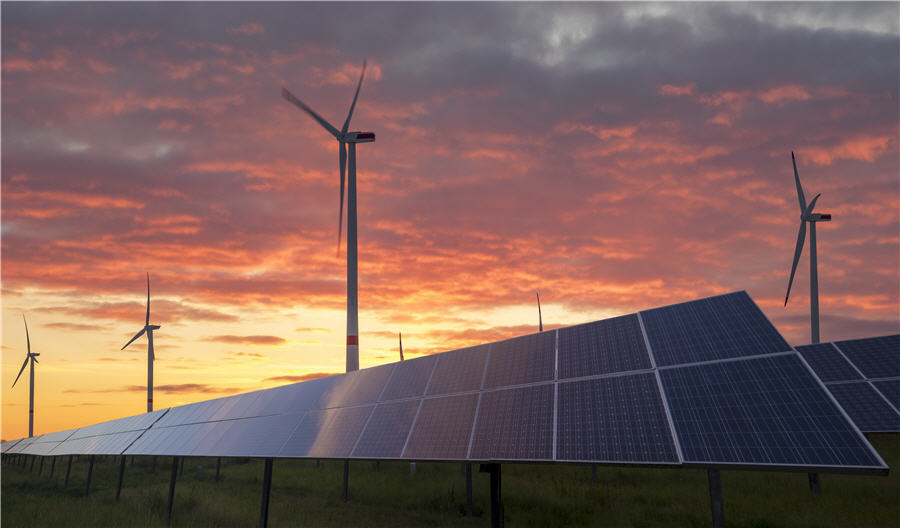
Who decides the future of energy – the producers, or the consumers?
It’s a question that’s been asked at least since the 1970s, when the growing muscle of the Organization of Petroleum Exporting Countries and the 1973 oil embargo sparked the founding of the International Energy Agency as a rival group to represent the interests of oil importers.
That same pattern has been playing out in recent days with elections in one of the world’s biggest energy exporters and one of its biggest importers. Both will have a crucial impact on the direction of global energy policies – particularly in its dirtiest form, fossil fuels.
In Australia, Saturday’s election delivered a victory for the government of Prime Minister Scott Morrison, who now looks likely to be able to form a majority government after fighting off an opposition push that leaned heavily on a more aggressive climate change policy.
Policy is now being driven by economics, not government diktat
In India, Prime Minister Narendra Modi seems headed to a similar victory, but there the situation is reversed: While both his Bharatiya Janata Party and the opposition Congress have both voiced support for renewable energy and plans to reduce the country’s choking air pollution, Congress hasn’t matched Modi’s specific promise to install almost 100 gigawatts of additional renewables by 2022.
The two countries are intimately linked on energy. India looms large in the Australian energy debate as a potential source of demand for its coal exports. One of the most controversial fossil fuels projects in Australia is the Carmichael coal mine, a project that’s been under development by Indian billionaire Gautam Adani’s Adani Enterprises Ltd. for the best part of a decade.
As we’ve argued in the past, Carmichael is an emperor’s new clothes project that’s unable to stand on its own feet, despite the pretense by both sides of politics. At the same time, the project has totemic significance in Australia as a proxy for the fight between environmentalists and coal miners. Former resources minister Matt Canavan tweeted his support for the mine as soon as the government looked like being returned.
The politics of this remain treacherous. Though much has been made of some heavy swings toward the government in seats close to the Carmichael project, the real risk for the opposition Labor party lies not in those constituencies (where it’s only rarely won election victories) but in the Hunter Valley north of Sydney.
This coal-mining region has long been one of Labor’s few heartlands outside the big cities, but heavy swings to the governing Coalition there have put the entire area in marginal territory. Labor will now more than ever be torn between urban areas where climate is becoming the number-one issue, and mining seats where it can’t afford to lose much more ground.
The position for the Coalition looks stronger – but here, too, there are risks. While the government won back former Prime Minister Malcolm Turnbull’s eastern Sydney seat from an independent campaigning on climate, across the harbor his predecessor Tony Abbott lost – to another independent campaigning on climate. The same dynamic has affected solidly Liberal territory in the affluent suburbs and exurbs of Melbourne and Sydney, where seats like Flinders, Kooyong, Bennelong and Higgins have moved into the marginal camp in stark contrast to the general drift toward the government.
Morrison’s own preferences and the strong pro-coal barracking of many of his MPs mean that it would still be wise to expect the government to do all it can to provide the support and money for fossil fuels that the private sector won’t. But even then, the past decade of bipartisan stasis and turmoil on climate and energy illustrate just how little scope Canberra has to force through radical change.
The more powerful gatekeepers, meanwhile, lie offshore. Modi’s government has a habit of missing its ambitious energy targets: Former energy minister Piyush Goyal often promised to end thermal coal imports by 2018, but that trade is still going reasonably strong; few analysts expect the government to hit its target of 175 gigawatts of renewable installations by 2022.
At the same time, policy is now being driven by economics, not government diktat. Vast over-building of coal plants in India over the past decade has left too much idle capacity and filled the financial system with bad loans. New wind and solar systems have cost less than new coal in India for a while. Even those with partial battery back-up are now becoming competitive, with costs as low as $50 to $60 per megawatt-hour compared to a best-case $43/MWh for coal, according to BloombergNEF estimates.
As we’ve argued, investors in energy seem now to be sitting on the sidelines, waiting to see whether the cost deflation in renewables will overcome issues around grid integration, or whether some unforeseen policy backlash can drive a second coming of fossil fuels. Politicians in Australia and India will do their best to shape this future – but the market is yet to cast its vote.
(By David Fickling)